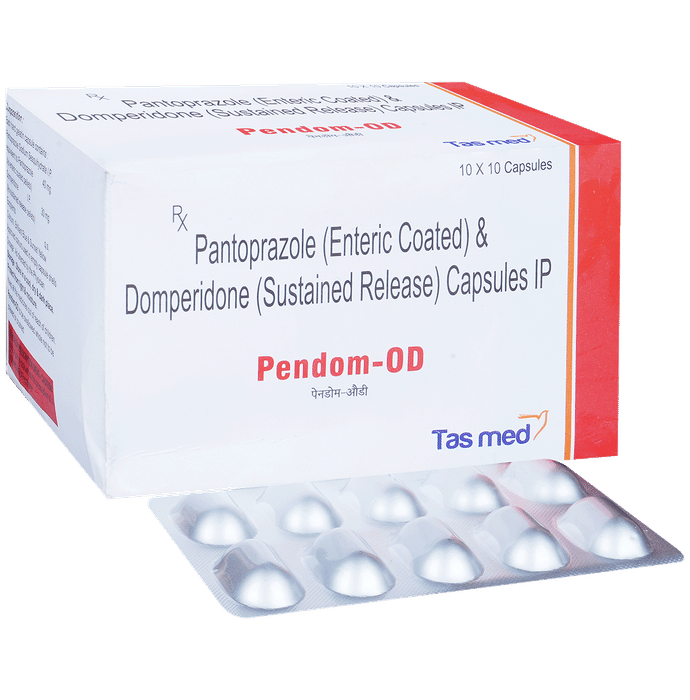gapitas GABAPENTIN
Introduction to gapitas
Gapitas is a medication primarily used to treat nerve pain, seizures, and restless legs syndrome. Available in tablet form, gapitas helps manage discomfort caused by nerve damag... See More
Can I take Gapitas with other prescription drugs?
Gapitas can interact with other medications, increasing the risk of side effects or reducing effectiveness. Antacids containing magnesium or aluminum can decrease Gapitas's absorption. Opioids and sedatives can enhance drowsiness and dizziness. Always inform your doctor about all medications you are taking to avoid potential interactions. Your doctor can adjust your treatment plan to ensure safety and effectiveness.

Does Gapitas affect appetite?
Gapitas can affect appetite, leading to increased hunger or changes in eating habits, but this is not common. Most people take Gapitas without noticing changes in their appetite. If you experience unexpected appetite changes, talk with your doctor. They can help determine if Gapitas is the cause and suggest ways to manage these changes, such as maintaining regular meal times and a balanced diet.

Does Gapitas affect mood?
Gapitas can affect mood in some people, causing changes like anxiety or agitation. These side effects are considered occasional and usually mild to moderate. If you notice mood changes after starting Gapitas, talk with your doctor. They can help determine if Gapitas is the cause and suggest ways to manage these symptoms, such as adjusting the dose or trying a different medication.

Does Gapitas affect sleep?
Gapitas can cause sleep disturbances like insomnia or excessive sleepiness, but these are not common. Most people take Gapitas without experiencing changes in their sleep patterns. If you notice sleep problems after starting Gapitas, talk with your doctor. They can help determine if Gapitas is the cause and suggest ways to improve your sleep while continuing your treatment.

Does Gapitas cause headaches?
Headaches can occur as a side effect of Gapitas, but they are not common. Most people take Gapitas without experiencing headaches. If you do get mild headaches, staying hydrated and resting may help. Over-the-counter pain relievers can also be used after consulting your doctor. If headaches are severe or persistent, talk to your healthcare provider to determine if Gapitas is the cause or if another issue needs attention.

Does Gapitas cause stomach upset?
Gapitas can cause stomach upset, including nausea and vomiting, but these side effects are not common. If you experience mild nausea, taking Gapitas with food might help. Most people take Gapitas without significant stomach issues. If you develop severe or persistent stomach problems, talk with your doctor. They can help determine if these symptoms are related to Gapitas or if another cause needs attention.

Does Gapitas cause weight gain?
Gapitas can cause weight gain in some people, but this is not common. The weight gain is usually mild to moderate. If you notice significant weight changes, talk with your doctor. They can help determine if Gapitas is the cause and suggest ways to manage your weight, such as adjusting your diet or exercise routine.

Does Gapitas interfere with sexual function?
Gapitas can interfere with sexual function in some people. It may cause sexual health side effects like erectile dysfunction or loss of libido, which means a reduced interest in sexual activity. These side effects are considered occasional, not common, and are usually mild to moderate. If you experience these issues, talk to your doctor. They can help determine if Gapitas is the cause and suggest ways to manage these side effects, such as adjusting the dose or trying a different medication.

Does Gapitas limit driving?
Gapitas can cause dizziness, drowsiness, and blurred vision, which may impair your ability to drive safely. It's important to understand how Gapitas affects you before driving. If you feel dizzy or drowsy, avoid driving until these symptoms go away. Always prioritize safety and talk with your doctor if you have concerns about driving while taking Gapitas.

Does Gapitas make it hard to think or concentrate?
Gapitas can cause cognitive side effects like difficulty concentrating or thinking clearly, but these are not common. Most people take Gapitas without experiencing these issues. If you notice problems with your thinking or memory, talk with your doctor. They can help determine if Gapitas is the cause and suggest ways to manage these symptoms while continuing your treatment.

Does Gapitas make people tired or drowsy?
Gapitas can cause drowsiness and fatigue, which are common side effects. These symptoms are usually mild to moderate. If you feel unusually tired, talk with your doctor. They can help determine if Gapitas is the cause and suggest ways to manage these symptoms, such as adjusting your dose or timing of medication. Proper rest and a balanced diet can also help maintain your energy levels.

For how long do I take Gapitas?
Gapitas is often used for long-term management of chronic conditions like nerve pain or seizures. The duration of use depends on your specific health needs and how well you respond to the medication. Your doctor will guide you on how long to take Gapitas. Always follow your doctor's advice and do not stop taking Gapitas without consulting them, as this could worsen your condition.

How does Gapitas work?
Gapitas works by calming nerve activity in the brain, which helps reduce pain and prevent seizures. It mimics the action of a neurotransmitter called GABA, which is a chemical messenger that inhibits nerve activity. Think of it like turning down the volume on a loudspeaker to reduce noise. This action makes Gapitas effective for treating nerve pain, seizures, and restless legs syndrome.

How do I know if Gapitas is working?
Gapitas is used to treat nerve pain, seizures, and restless legs syndrome. You'll know it's working if you experience less pain, fewer seizures, or reduced leg discomfort. Your doctor may monitor your progress through regular check-ups and adjust your treatment as needed. It's important to communicate with your doctor about how you're feeling to ensure Gapitas is effective for your condition.

How do I take Gapitas?
Take Gapitas as prescribed by your doctor. It's usually taken once or twice daily, with or without food. Swallow the capsules whole; do not crush or chew them. If you miss a dose, take it as soon as you remember unless it's almost time for your next dose. In that case, skip the missed dose and continue your regular schedule. Do not take two doses at once. There are no specific dietary restrictions, but always follow your doctor's advice.

How long does it take for Gapitas to start working?
Gapitas starts working within a few hours of taking it, but it may take several days to weeks to achieve its full therapeutic effect. The time it takes to work can vary based on individual factors like your condition, dosage, and overall health. Be patient and continue taking Gapitas as prescribed. Your doctor will monitor your progress and make any necessary adjustments to your treatment.

How should I store Gapitas?
Store Gapitas at room temperature, away from moisture and light. Keep it in a tightly closed container. Do not store it in the bathroom, where humidity can affect the medication. Keep Gapitas out of reach of children and pets to prevent accidental ingestion. Always check the expiration date and properly dispose of any unused or expired medication.

Is Gapitas effective?
Gapitas is effective for treating nerve pain, seizures, and restless legs syndrome. It works by calming nerve activity in the brain. Clinical studies show Gapitas can significantly reduce pain and improve quality of life for people with nerve pain. It also helps control seizures in epilepsy patients. Always follow your doctor's instructions to achieve the best results with Gapitas.

Is Gapitas safe for the elderly?
Elderly individuals may be more sensitive to Gapitas's side effects, such as dizziness and drowsiness, which can increase the risk of falls. Dose adjustments may be necessary due to age-related kidney function changes. It's important for elderly patients to be closely monitored by their doctor while taking Gapitas to ensure safety and effectiveness.

Is it safe to drink alcohol while taking Gapitas?
It's best to avoid alcohol while taking Gapitas. Alcohol can increase the risk of side effects like dizziness and drowsiness, which can be dangerous. Drinking alcohol with Gapitas may also impair your ability to think clearly or react quickly. If you choose to drink, do so in moderation and be aware of how your body responds. Always talk with your doctor about alcohol use while on Gapitas.

Is it safe to drink coffee or tea while taking Gapitas?
You can drink coffee and tea while taking Gapitas, as there's no known interaction between caffeine and Gapitas. However, caffeine can cause increased nervousness or jitteriness in some people. If you notice any unusual symptoms, try reducing your caffeine intake. Always drink caffeinated beverages in moderation and stay hydrated by drinking plenty of water throughout the day.

Is it safe to exercise while taking Gapitas?
You can exercise while taking Gapitas, but be cautious. Gapitas can cause dizziness or drowsiness, which might affect your balance or coordination during physical activity. To exercise safely, start with light activities and gradually increase intensity. Stay hydrated and listen to your body. If you feel dizzy or unusually tired, stop exercising and rest. Consult your doctor if you have concerns about exercising while on Gapitas.

What are Gapitas possible harms and risks?
A side effect is an unwanted or unexpected symptom caused by a medication. Common side effects of Gapitas include dizziness, fatigue, drowsiness, peripheral edema (swelling of the extremities), and ataxia (lack of muscle coordination). These side effects are generally mild and occur in more than 10% of users. It's important to note that new symptoms can appear when starting any medication, which may be unrelated or temporary. Always consult a healthcare provider before stopping any medication.

What disease or symptom is Gapitas used for?
Gapitas is used to treat nerve pain, seizures, and restless legs syndrome. It helps reduce pain by calming nerve activity in the brain. For seizures, Gapitas prevents abnormal electrical activity that causes them. It's often used in combination with other therapies to enhance its effectiveness. Always follow your doctor's instructions when using Gapitas for these conditions.

What is Gapitas?
Gapitas is a medication used to treat nerve pain, seizures, and restless legs syndrome. It belongs to the anticonvulsant class of drugs. Gapitas works by calming nerve activity in the brain, which helps reduce pain and prevent seizures. It's often used in combination with other therapies to enhance its effectiveness. Always follow your doctor's instructions when taking Gapitas.

What is the usual dose of Gapitas?
The usual starting dose of Gapitas for adults is 300 mg once daily, which can be increased based on your doctor's advice. The dose may be adjusted depending on your condition and response to the medication. The maximum recommended dose is 3600 mg per day, divided into three doses. For children and the elderly, dose adjustments may be necessary. Always follow your doctor's specific dosing instructions for your health needs.

Who should avoid taking Gapitas?
Gapitas should not be used if you are allergic to it or its ingredients, as this can cause serious allergic reactions. Caution is needed if you have kidney problems, as Gapitas is processed by the kidneys. Dose adjustments may be necessary. Always inform your doctor about your medical history and any other medications you are taking to avoid potential risks.
Available in 2 variations

Gapitas 300mg Tablet 10s
strip of 10 tablets

strip of 10 tablets













.svg)
